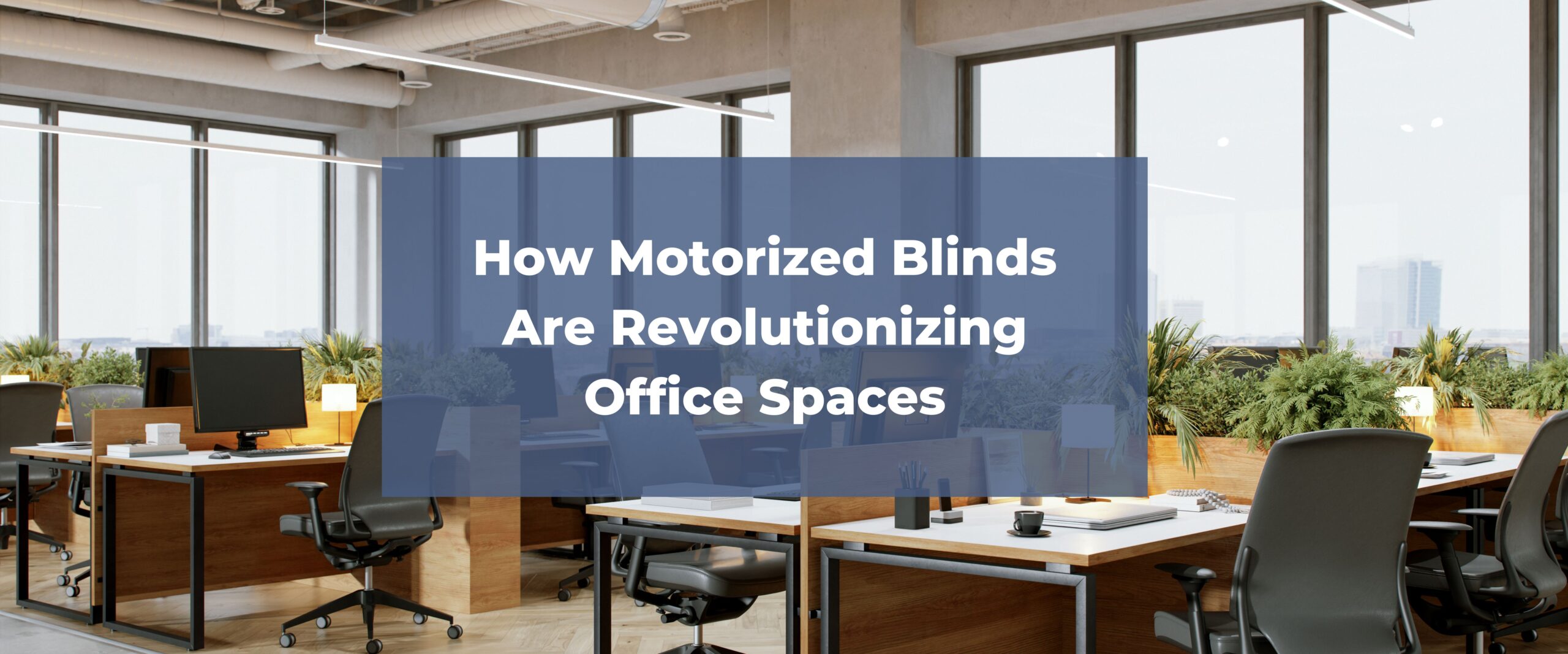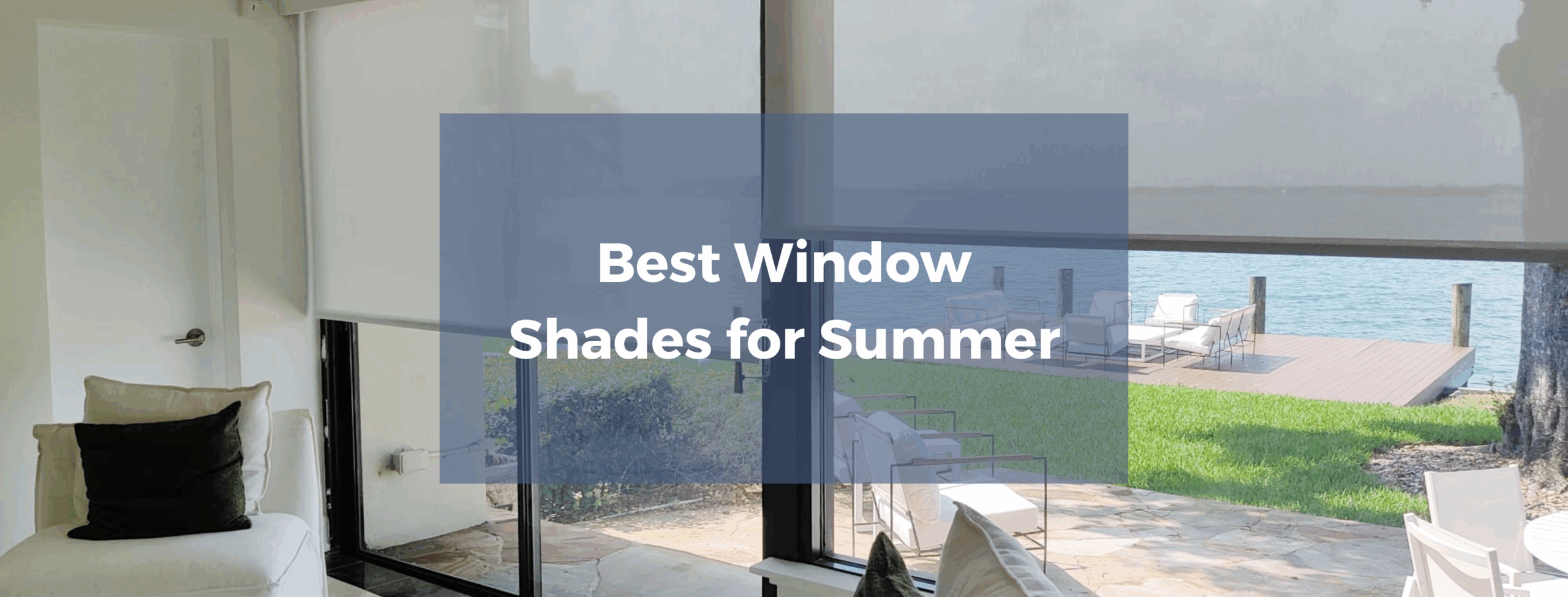
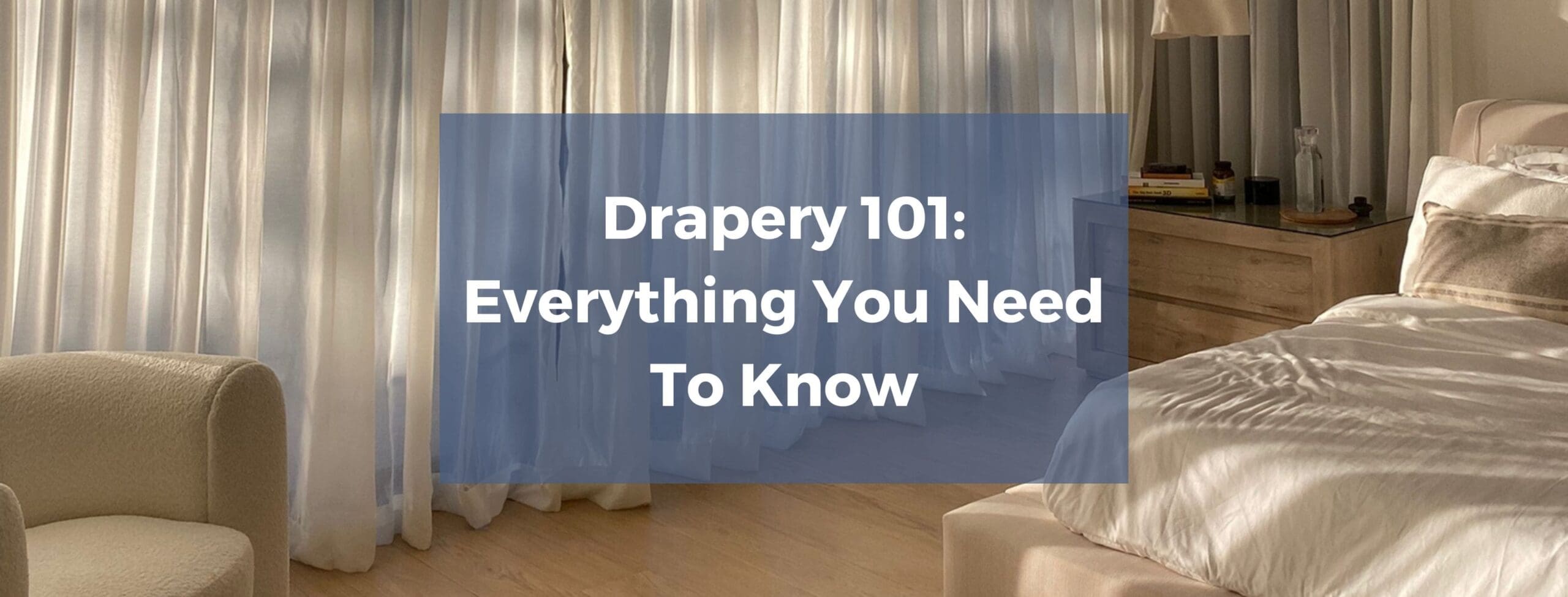
Drapery is an essential element of any room design, providing not only privacy and light control but also adding style and personality to a space. From the fabric and color selection to the pleat styles and operation, drapery can be customized to fit any design style and window shape. Whether you are looking to create a cozy and inviting atmosphere with textured fabrics, add a pop of color with bold patterns or bring a touch of elegance with formal pleat styles, the options for drapery are endless.
In this blog, we will explore all things drapery, including different pleat styles, how they operate, what are the advantages and disadvantages, how to maintain them, and child safety. We will also discuss the latest trends and tips for choosing the perfect drapery for your home.
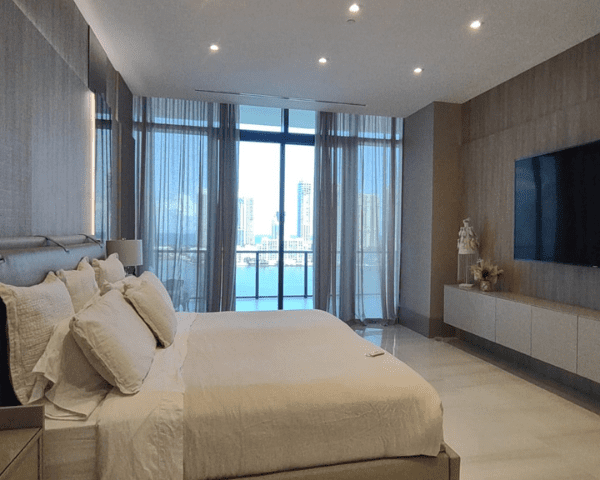
Before we get started, let’s first answer the most popular question people have when it comes to draped window treatments – is there a difference between drapery and curtains? Drapery and curtains are both types of window treatments, but they differ in a few ways. Drapery is typically
made of heavier, more luxurious fabrics and is designed to be hung from a rod using hooks or rings. It is often lined and can be customized with various pleat styles, such as pinch pleats,
goblet pleats, or ripplefold pleats. Drapery is typically used to add elegance and sophistication to a room, and it can provide insulation and light control.
On the other hand, curtains are made of lighter weight fabrics and are generally less formal than drapery. They are often hung from a rod using tabs or loops, and they come in a variety of
styles and lengths. Curtains can provide privacy and light control, and they are often used to add color or pattern to a room. Unlike drapery, curtains are not typically lined and do not have pleats.
Overall, the main differences between drapery and curtains are the weight and type of fabric used, the level of formality, and the style of hanging.
Pleat styles are an important factor to consider when selecting your drapery. The pleats determine the fullness of the drapes, and can affect how they hang and operate. Below are some of the most popular pleat styles:
1. Pinch Pleat
Pinch pleats are one of the most traditional pleat styles. They create a tailored and formal look, with two-finger or three-finger pinches evenly spaced across the panel. Pinch pleats work well with heavy fabrics and can add structure to a room.
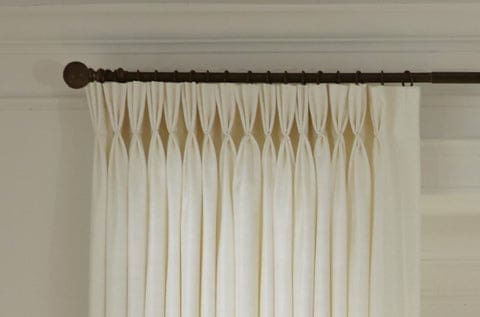
2. Ripplefold Drapery
A modern and elegant pleat style that is gaining popularity in the world of window treatments. The pleats are small and evenly spaced, giving the drapery a subtle and uniform ripple effect. Ripplefold is available in different fullness options ranging from 60% to 120% fullness, which affects the amount of light control at the top of the fabric. Ripplefold drapery works well with a variety of fabrics and can be customized to fit any window size. Its sleek and contemporary look makes it a great option for a modern and
minimalist design style.
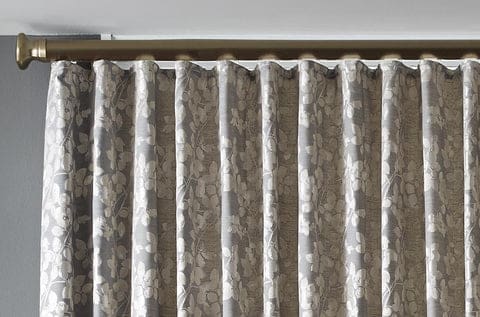
3. Tuxedo Pleat
Tuxedo pleat drapery is a pleat style that creates a formal and tailored look. It is named after the traditional tuxedo suit, which features a similar folded-over design. The pleat is created by folding the fabric over itself, and the folds are then tacked down with stitches to hold them in place. The tuxedo pleat is typically used with heavier fabrics, such as velvet or wool, to create a structured and luxurious look. Typically used in formal areas such as dining rooms, it provides a clean and elegant look that can add a touch of sophistication to any room.
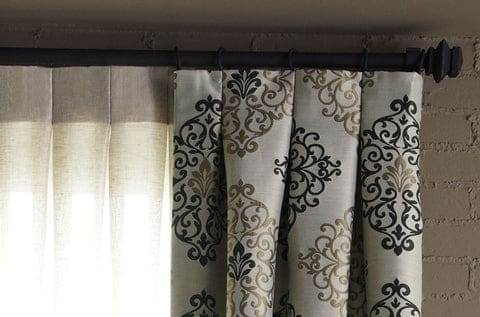
Drapery operating styles determine how you open and close your drapes. There are a few different options that work better depending on your pleat style and determining which is right
for you will allow you to adjust your drapery with ease. Below are some of the most popular operating styles:
1. Standard Draw
Standard draw operating style is the most common and straightforward. It involves pulling a cord or wand to open and close the drapes. Standard draw works well with all
pleat styles and is easy to operate.
2. Traverse
Traverse operating style involves a cord or wand that allows the drapes to be opened and closed by sliding along a track. Traverse works well with heavy or long drapes, but can be more expensive and difficult to install.
3. Motorized
Motorized operating style involves a motor that allows the drapes to be opened and closed with the push of a button or through a remote control. Motorized works well with
all pleat styles and is convenient, but requires a professional installation.
Finding the right window treatment for your home requires you to weigh the pros and cons of the various styles. Drapery has its advantages and disadvantages, depending on your needs and preferences.
Advantages:
● No matter the pleat style, drapery adds elegance and sophistication to a room.
● Blackout drapery fabrics can provide privacy and regulate light.
● Drapery can enhance energy efficiency by blocking out drafts.
● It can also reduce noise and improve acoustics.
Disadvantages:
● Depending on the customization and fabric you choose, it can require maintenance and cleaning.
● Drapery can collect dust and allergens.
● It may not be the best solution for households with pets.
● Drapery can be expensive, especially with custom options.
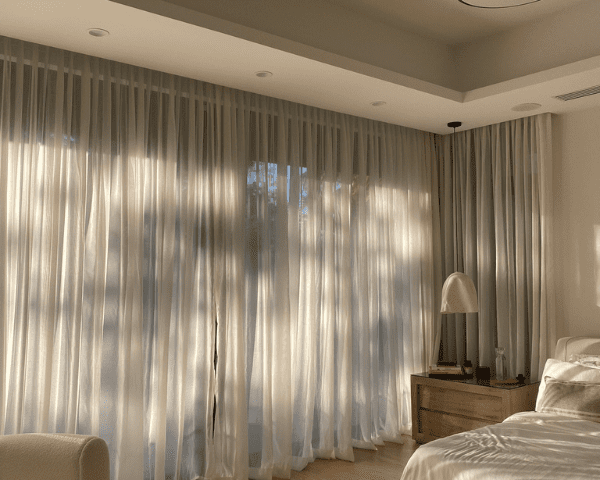
Child safety is an important consideration when it comes to drapery. To ensure the safety of children in your home, it is important to take certain precautions. Firstly, it is recommended to install cordless operating systems for your drapery, such as motorized or wand-operated systems, to prevent any risk of strangulation. If you do have corded operating systems, make sure to keep the cords out of reach of children by using cord cleats or cord tensioners.
Additionally, avoid placing any furniture, beds or cribs near your drapes as children can climb and accidentally get tangled in them. Always supervise children around drapes and teach them about the potential hazards to ensure their safety. By implementing these safety practices, you can enjoy your beautiful drapes while keeping your children safe.
1. Sustainable and Eco-Friendly Fabrics: In recent years, there has been a growing trend towards using eco-friendly and sustainable fabrics, and this is likely to continue in the future. Fabrics made from organic cotton, linen, and bamboo are becoming increasingly popular, as they are environmentally friendly and also offer a natural and relaxed look.
2. Bold Colors and Patterns: Another trend that is expected to continue in 2023 is the use of bold colors and patterns. Vibrant hues, such as bright blues, greens, and pinks, are
being used to add a pop of color to rooms, while large scale patterns are being used to create a statement and add interest to a space.
3. Textured Fabrics: Textured fabrics such as velvets, tweeds, and boucles are becoming more popular for drapery. These fabrics add depth and interest to a space, and they can be used to create a cozy and inviting atmosphere.
4. Motorized Drapery Systems: Technology is advancing rapidly, and motorized drapery systems are becoming increasingly popular. With the touch of a button, these systems
can open or close drapery, making it easy to adjust the amount of light and privacy in a room.
5. Layering: Layering is a trend that has been gaining momentum in recent years, and it is expected to continue in 2023. Combining different types of drapery, such as sheer
drapery and blackout drapery, can create a more interesting and dynamic look. Layering also provides more options for light control and privacy. Want to create a unique look?
Layer roller shades with drapery to get the perfect custom window treatment solution!
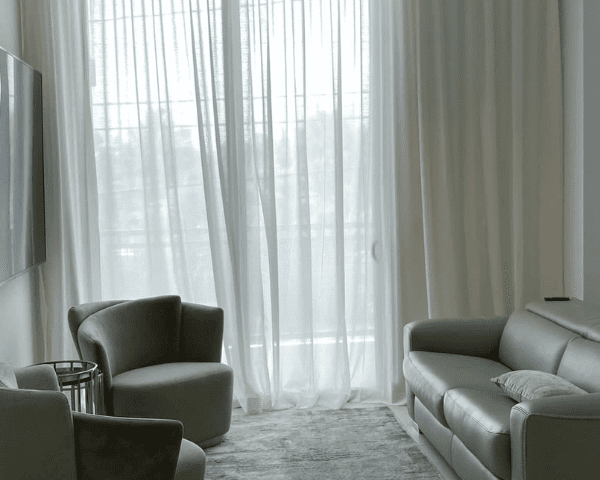
Drapery is an essential aspect of any room design, offering both functionality and style. By selecting the right fabric, color, and pleat style, you can create a beautiful and customized look
that reflects your personal taste and elevates the ambiance of your space. Remember to consider child safety when choosing your drapery, and always follow the recommended guidelines to avoid accidents. With the latest trends and tips for drapery selection, we hope this blog has been informative and helpful in your quest for the perfect window treatment.
Interested in custom drapery for your home? ShadeMonster can help! Call us today to speak with one of our design specialists to get started on your custom order.
ShadeMonster boasts over 25 years of experience creating custom window treatments. Our products come directly from our local factory guaranteeing high quality customizable materials, competitive pricing, and quick turn around. Contact us today for your free estimate, and have your new drapery in less than 10 business days!
ShadeMonster’s team of experts are happy to assist. Call now for free consultation: 866-206-8056



